Published on March 12, 2013
One hundred years ago today, the publication Flight, from the Royal Aero Club, was arriving in the post around Great Britain carrying news of events far and wide in the circles of aviation. Among the stories was a snippet entitled, “Brindejonc des Moulinais Returns Home”. The story was about a visiting French aviator who had flown across the English Channel to visit Hendon and then, a few days later, had hopped his way back across and continued down through Belgium and France until he reached his home field at Villacoublay. Reading the story today, one is struck by the thought that aviators of 100 years ago were made of strong stuff indeed.
It is amazing to think of a Frenchman risking his life just to visit England’s finest aviators at Hendon, yet so it was! Ahhh, adventure awaits, young pilot, so long as you live to tell the tale….
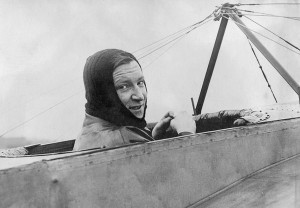
Who was Brindejonc des Moulinais?
Marcel-Georges Brindejonc des Moulinais was born on February 18, 1892, in the town of Plérin, in Côtes-d’Armor, France. In the summer months of 1909, he first flew from aerodromes at Dinan and Dinard. He continued his training in 1910 and, by the end of that summer had purchased his first airplane from Alberto Santos-Dumont at Issy-les-Moulineaux. He then traveled to Pau where he enrolled in a more formal flight training program. A year later, on March 23, 1911, he earned FAI certificate No. 448 through the Aero-Club de France. To pay back the loan from his family that had funded his training, he embarked on a series exhibition flights and competitions across south and central France. Soon afterward, he traveled to Paris and become a pilot with the Morane company. By 1913, he was as famous in France as Roland Garros, having completed in many races and flown across Europe.

The Long Flight Home
Thus, he elected to fly to England in late February of 1913. Whether Marcel-Georges Brindejonc des Moulinais went on official business for Morane or just as a private, person is unclear. In any case, there can be no doubt the Morane company was pleased that he was taking their new model of the Morane-Saulnier C across to introduce at Hendon. After having crossed the English Channel, he flew over London as a way of announcing his presence. In doing so, however, he unknowingly broke the law — there were restrictions on such flights over the English capital by foreign nationals. After landing, he was fined the equivalent of nearly 1,000 francs. Welcome to England, indeed.
After a short visit at Hendon, he decided it was time to head back to France. Thus, he departed without much delay. It was then that the newsletter Flight picked up on his journey, making scant reference to the dangers ahead in recrossing the English Channel:
AFTER only a two-days’ stay in London, Brindejonc des Moulinais returned to France on his Morane monoplane, of course, on Thursday of last week. He left Hendon about one o’clock, and in about an hour reached Dover, where he rested for three quarters of an hour.
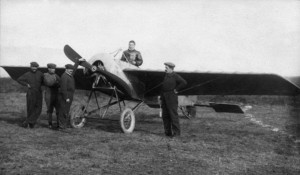
The engine on a Morane, as with all engines of that era, was noisy, spitting castor oil and smoke. No doubt, after the flight down from Hendon to Dover, the 45 minutes rest was needed just to relax, get the ringing out of his ears, and clean the oil spray off of his goggles, face and jacket. Nonetheless, he did not delay long. Ahead was the most dangerous stretch — the English Channel — and it was best to take on the flight during the midday in the event of a crash in the water.
Crossing over to the Continent was no small challenge. If the engine died over the water, there were no options but to ditch the plane and hope that a fishing boat might spot you. More than a few aviators had disappeared in the Channel in that way, having never been found. In most cases, the shifting currents of the waters held the body for weeks, sometimes for months, before it would wash up on the shores of either England or France.
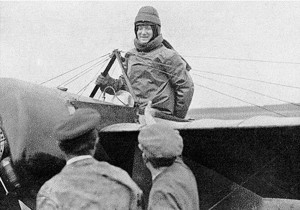
Another issue was the lack of any weather reporting over the Channel itself, where winds and conditions can change quickly. Looking across as far as the eye could see, Marcel-Georges Brindejonc des Moulinais felt that conditions were favorable. He set out:
He then made an exciting crossing of the Channel, as half-way over he was trapped in a fog. Fortunately, he saw a fishing smack, and the crew signalled the direction of Calais, where he safely landed after 45 mins. flying.
Imagine yourself in his position, in fog, without navigation instruments — not even a compass. He flew low, keeping his eyes on the water just to keep the aeroplane upright. One must remember too that the aeroplanes of that age, including the Morane monoplane that he flew, were unstable and had to be flown all the time by hand. If you let go of the stick, the aeroplane would not track straight and level as a modern Cessna or Piper would.
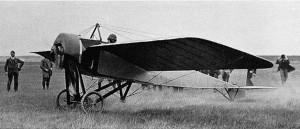
The flight must have been exhausting, if perhaps equally exhilarating. In any case, he slept overnight at Calais before continuing on. From there, he flew across the beautiful countryside, down low over the farm fields and forests of Belgium and France:
The next day he started for Brussels, and landed at the Berehem aerodrome after a trip of 1 hr. 50 mins.
At Berehem, he didn’t even rest, but rather pressed on all the way home to Villacoublay with just one more stop en route. By the late afternoon, he had arrived finally at his home:
The last stage of the journey to Paris was commenced at 1.20 p.m., and at 2.43 p.m. a stop was made at Compiegne. Half an hour later the machine was once more in the air, and at 3.50 p.m. Villacoublay was safely reached.
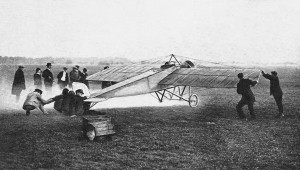
End Notes
The writers at Flight summed up the flight with some degree of amazement at the Frenchman’s prowess and daring. Such a visit to England, not coming on a boat with the plane packed in crates, but flying there and back, was truly an extraordinary event for the time. It warranted a follow-up report in the Royal Aero Club’s newsletter in any case. While today, a flight like his would be more a matter of having the money than taking the risk, in those days, it was quite nearly a death-defying feat.
The final word on the flight was just this:
In three days the Morane-Saulnier machine, which has a 50-h.p. Gnome motor and a Chauviere-Integrale propeller had covered 1,040 kilom.
Our hat is off to you, Marcel-Georges Brindejonc des Moulinais, from 100 years on, for what was truly a glorious flight!
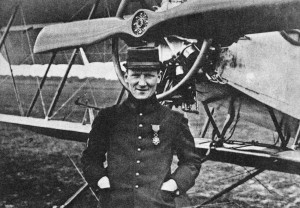
One More Bit of Aviation History
On April 20, 1914, Marcel-Georges Brindejonc des Moulinais would pilot a Morane for France as part of that country’s entry into the Schneider Cup seaplane races at Monaco. Just weeks later, the Great War would break out in Europe and, like many private citizen aviators, he joined the French military to fly for his country. Suffering sickness, he spent some time as an instructor. Nonetheless, he did manage to engage in combat and down a German plane. Sadly, on August 18, 1916, he was shot down while flying over Vadelaincourt, a village in the Verdun sector.
Today’s Aviation Trivia Question
How well did Marcel-Georges Brindejonc des Moulinais place at Monaco in the Schneider Cup races of 1914? What happened there?

“The next day he started for Brussels, and landed at the Berehem aerodrome”
That should most probably be Berchem, short for Berchem-ste-agathe, now absorbed in the Brussels Capital. The aerodrome itself has long since disappeared but there is still a street called Drève De L’aérodrome (Aerodrome drive) which reminds of the heroic “aviateurs” like Marcel-Georges Brindejonc
Brindejonc’s Morane Saulnier finished 3rd in Monaco
Brilliant, correction to be made!